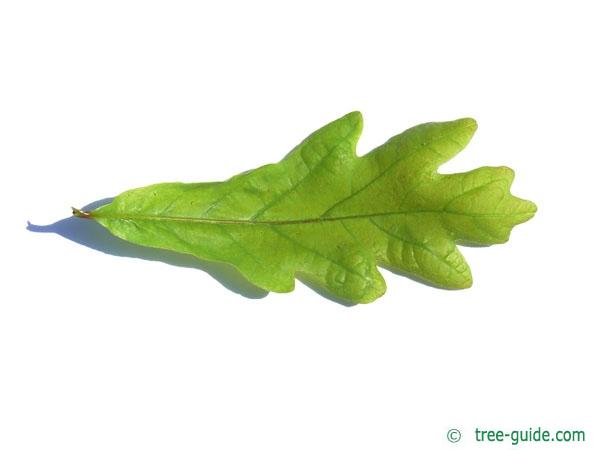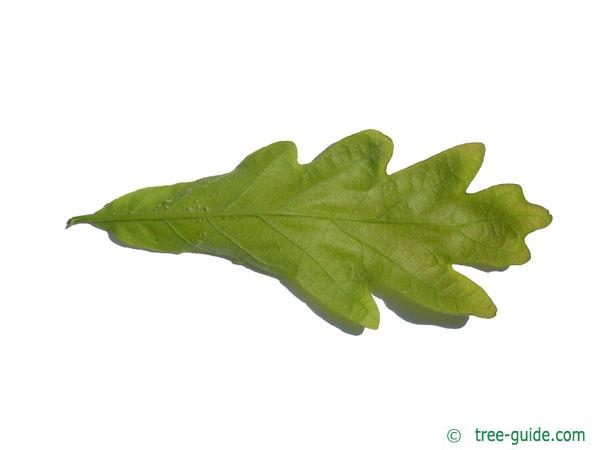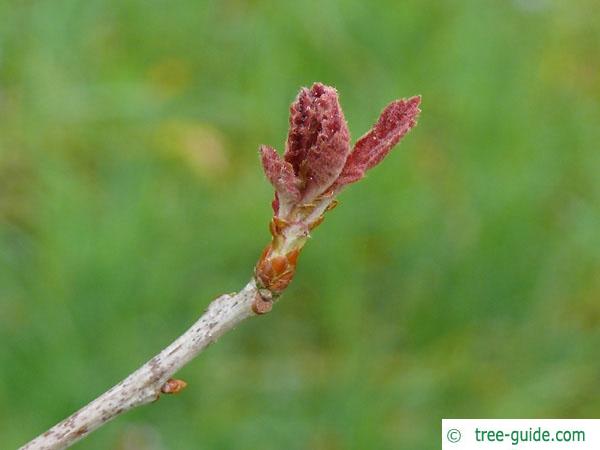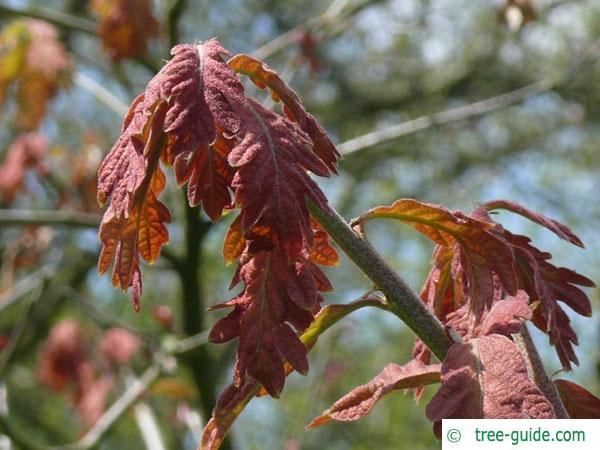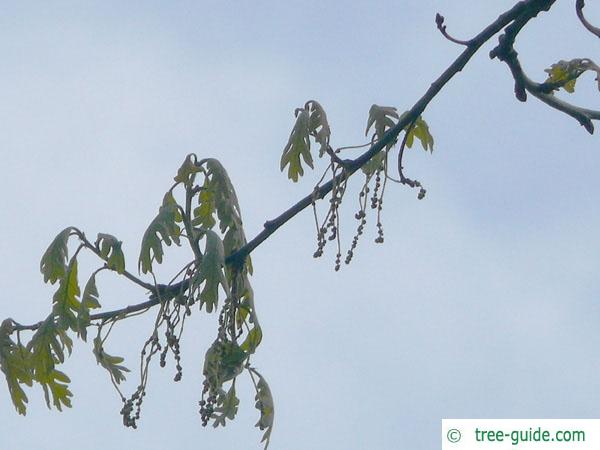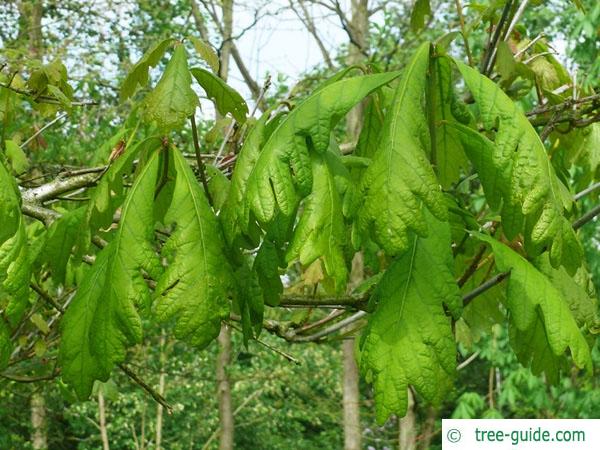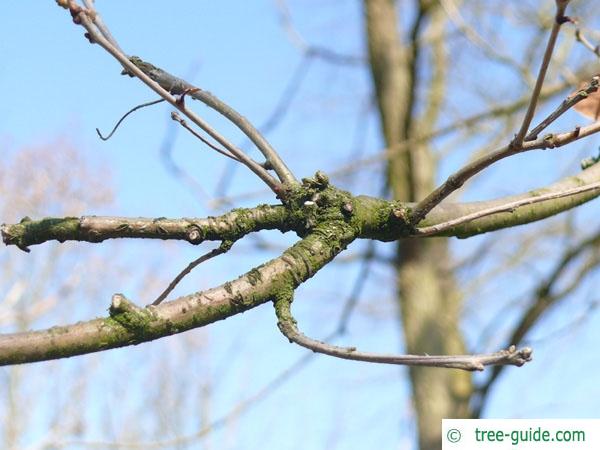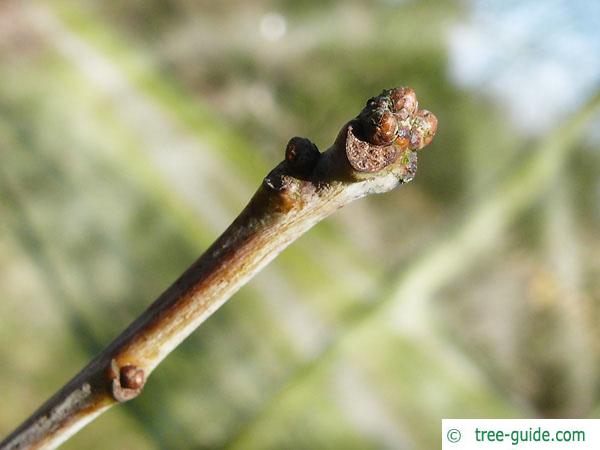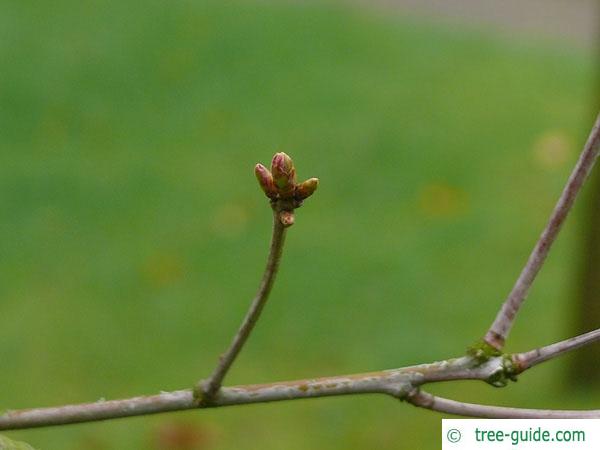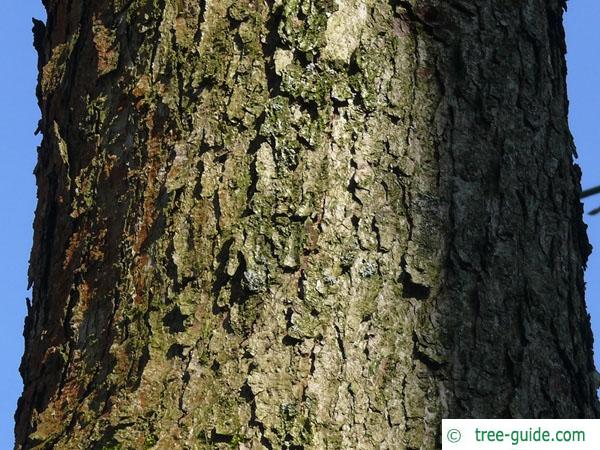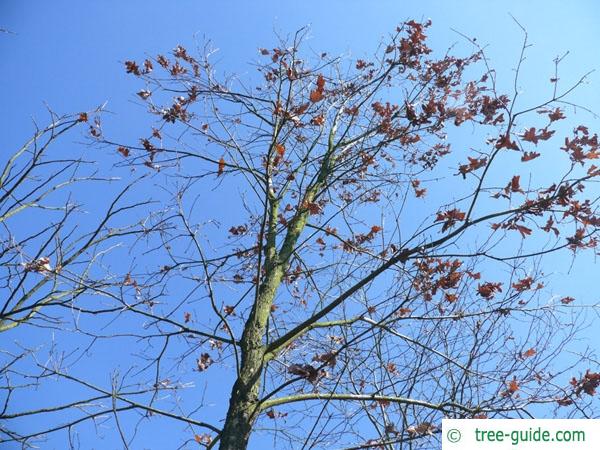Basisdaten
The White oak has a large, rounded crown. The branches protrude horizontal often. The autumn color is gorgeous red. The natural occurrence of of the oak is the east coast of America to the interior.
Tree profile
The leaves of the White oak are funnel-shaped, sinuate and up to 20 cm long and 9 cm wide. The upside is green to gray-green, the underside is lighter. In the sprouting the leaves are tomentose and slightly reddish. The leaf margin is smooth.
The male inflorescences are yellowish-green, hanging down and up to 10 cm (3.9 in) long. The female flower is inconspicuous and reddish.
The acorns are about 2 cm (0.8 in) long, on short stalks in groups (1-3 pieces). The fruit cup is short.
The young twigs are reddish to greenish, slightly hairy later they are gray and bare.
single tree in large gardens and parks. In America also forest tree.
Oaks additional information
overview leaves | overview blossoms
overview fruit | overview trunks
overview winter | overview trees







